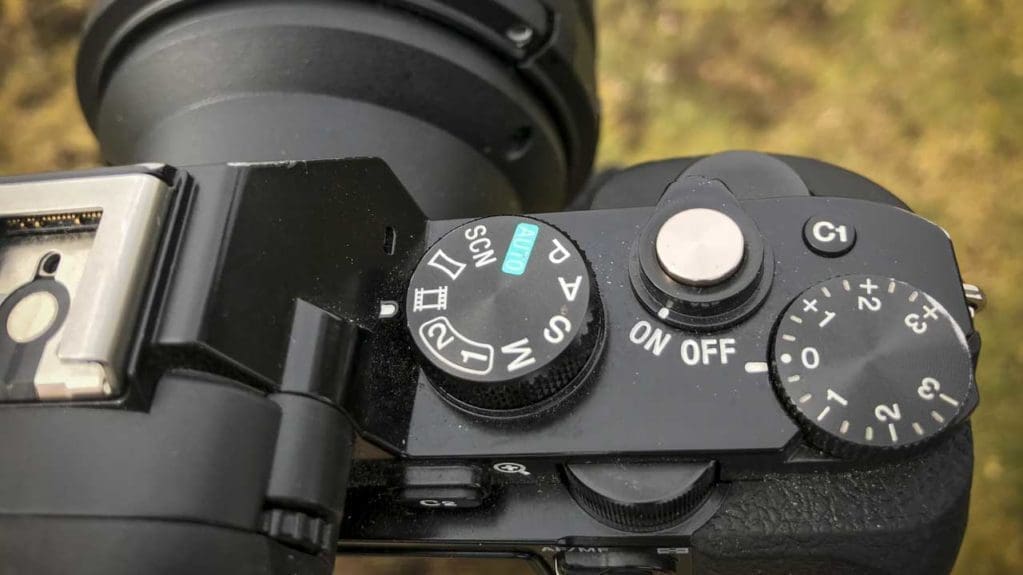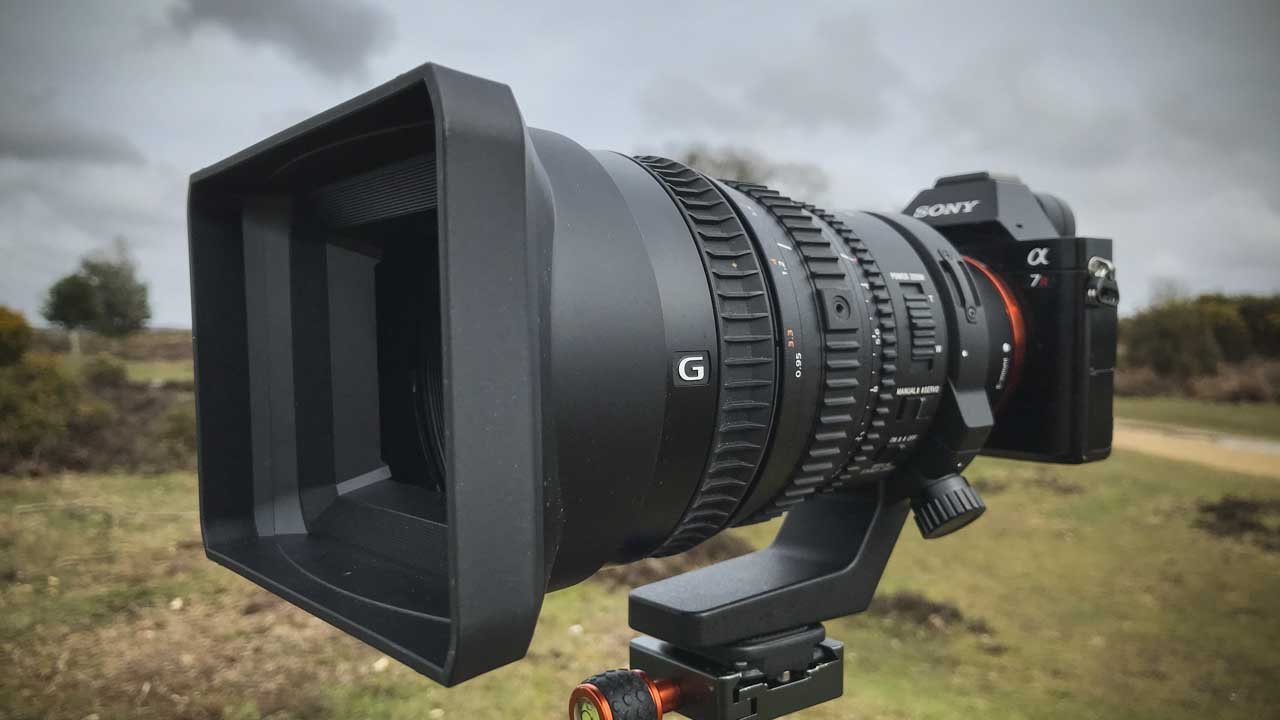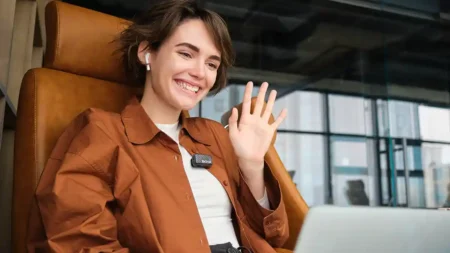What shutter speed for filming moving subjects? It’s a common question from those just getting into video with their DSLRs and Mirrorless systems. In this feature, we’ll take a look at the relationship between shutter speed and framerates when it comes to video.
As with stills photography, there are several factors that go into determining the exact shutter speed needed to capture a moving subject.
Suffice to say that the faster the shutter speed, the sharper the subject captured in the footage, but there’s a critical factor that you need to take into consideration, and that’s frame rate.
The relationship between shutter speed and the frame rate is one that stills photographers are often unaware of. Many set the shutter speed, as with stills, and then adjust the aperture, sensitivity etc, until they hit upon the correct exposure – but frame rate needs to be taken into consideration as well.
The quick answer to frame rates and moving subjects

When it comes to shutter speed with video, we must also look at frame rates.
At present 30frames per second (fps), is standard but there’s an increasing number of cameras can capture higher framerates than this.
If your camera can, then it’s worth taking advantage of these extra frames if there’s enough light around and you adhere to the 180-degree shutter rule, I’ll come onto that in a bit.
If your camera can shoot at 60fps then it’s also worth considering that not all platforms can playback video at that frame rate .
If everything is good for playback on your TV, computer or you know that your video will end up on YouTube or another video platform then filming and editing at 60fps will be fine.
As a general rule; film and edit at 30fps if your subjects are relatively static or there is little motion in the scene. Film at 60fps, if there’s activity with plenty of motion, this will ensure that you’re capturing footage with the smoothest motion possible.
Unfortunately, you have to consider the shutter speed and framerate relationship.
This relationship is known as the 180-degree shutter rule.
What is the 180-degree Shutter Rule?
The 180-degree Shutter Rule states that whatever the framerate the shutter speed should be double.
Therefore if you’re shooting at 30fps, then you’ll need a shutter speed of 1/60th; shoot at 60fps and your shutter speed should be 1/120th.
All easy – but as you’ll well know keeping that shutter speed down to 1/60th can be tricky and that’s why you’ll see many videographers walking around with variable ND’s attached to their lenses.
The variable ND enables you to control the light, but we’ll come on to that in a bit. For now, let’s look at the 180-degree shutter rule and how it works.
Stick to the 180-degree shutter rule
If you want to shoot good, solid video footage stick to the 180-degree shutter rule. To do this, all you need to do is to make sure that the shutter speed is twice that of the framerate.
Tv = 2xfps
Tv = Timer value or shutter speed
fps = Frames per second
Let’s look at an example. Full HD is played back at 30fps (I’m not getting into the technicalities, 30fps is a well-rounded number over 29.7, 60 or whatever other fps you’ve filmed at).
Check your camera for the movie quality settings, and you should see 1080p30. Select this and then switch your camera’s video shooting mode to manual so you can take full control over the shutter and aperture values.
As the fps we’re filming at is 30, we now know according to the 180-degree Shutter Rule that we need to shoot at a shutter speed of 1/60th. Now adjust the aperture to get the correct exposure.
If you’re stuck at the extremities of the exposure range, you’ll then need to increase or decrease your camera’s ISO value in order to get that 1/60th shutter speed.
How to set exposure for video
- Switch your camera to movie mode
- In your cameras movie settings select 1080p30
- Switch the movie mode to manual
- Set the shutter speed to 1/60
- Adjust the aperture to correct the exposure
- If you need more flexibility over the exposure adjust the ISO
Getting creative control over aperture
Very quickly you’ll see that there are a few issues with shooting video that you might be used to from your stills photography. Chief among them is that in normal lighting conditions you’ll need to close down your aperture in order to correct the exposure.
This will help you get the exposure you need, but as you’ll know from your stills photography, this pretty much eliminates the creative use of depth of field. This is why variable ND filters are such valuable accessories for video.
Screw one of these onto the front of your lens, and then you’ll be able to limit the amount of light that comes into the camera and be able to get creative with depth of field.
What if I break the 180-degree shutter rule?
Like other rules in photography, once you understand how it works… then you can start to break it! Breaking the 180-degree Shutter Rule is a great way to get creative with video effects. It’s how many experienced videographers develop a style to their captured footage and cultivate a look they’re after.
Here are some general guidelines for breaking the 180-degree Shutter Rule:
- Set the framerate to 30fps and the shutter speed to 1/30 and footage will look slightly blurred and romantic.
- Set the framerate to 30fps and the shutter speed to 1/120 and the footage will look jittery and motion dynamic.
These are guides to give you something to play with as your experience with video increases.
What if my camera offers higher framerates than 30fps?
The latest cameras are all offering 4K video and much higher framerates. If you check the 1080p options on your camera, you may see 1080p60 or even 1080p120, in which case you’ll need to increase the shutter speed to 1/120th and 1/240th, respectively.
Obviously, for these higher framerates you’ll need more light which can be a good thing if you want to get creative with a scene’s depth-of-field.
In normal use, these additional framerates at the same resolution are used for slow motion effects when playing back footage.
For instance, if your movie is being edited at 30fps, then one second of 60fps footage can be played back smoothly over 2 seconds, 120fps over 4 seconds and so on.
Because the clip contains more frames it can easily be stretched out without degrading the playback quality.
What about mixing framerates and shutter speeds in video?
The native playback for 1080p is 29.7 frames per second, but many players will enable you to playback more fps for smoother playback.
When you come to editing your video, you can choose the frame rate of your movie. This is usually dictated by the first the clip you drag into your timeline within your software.
If you have a mixture of framerates, then it’s usually best to drag in either a 30fps or 60fps to set the movies framerate and then each clip dragged into the timeline will set to this framerate.
You should always select the lowest framerate for the clips you have. If you have a selection of clips shot at 30, 60 and 120fps, then drag the 30fps clip into the timeline first to ensure that lower framerate is set as your video’s standard.
Depending on which video editor you’re using this will vary. In some applications you will need to go to the project settings to set this.
For most situations, 29.7fps / 30fps is more than enough.
As ever, the greater the fps, the smoother the footage when it comes to playback.
30fps can be used in 60fps playback, but the motion will seem jerky as one frame will be stretched over two frames to stretch it to 60fps.
Ensure you adhere to the 180-degree shutter rule before breaking it
When you start out to try to adhere to the 180-degree shutter rule. Once you’ve got to grips with the technique, then you can start to manipulate the settings to get the video effects that you want.
A good starting place is to use 1080p30 or 4K30 with a shutter speed of 1/60 then adjust the other settings to get the correct exposure.
The footage above was shot at 1080p24 with a shutter speed of 1/25 – check out the blurry motion.
The footage above was shot at 1080p24 with a shutter speed of 1/50 – nice smooth motion.
The footage above was shot at 1080p24 with a shutter speed of 1/500 – footage is a bit more dynamic.




Very helpful, thank you! Here is my problem, if I may: I have a Sony A7iii that is amazing in every way. We want to record lectures using a smartboard. Screen flicker is a problem. I have learnt that it can be minimized by making shutter speed a multiple of the screen refresh frequency (60 Hz would then be 1/120 shutter speed). The problem is that I am unable to set it to 120; it will only do 1/125 and so on. Could you please advise?
Great Information. Helped me a lot especially with those videos shot at different shutter speed.
I have a pre weeding shoot upcoming week and looking forward for it.
Always skeptical about 24fps because I had a blurry output, I have understood that its about the shutter speed as well.
I want a 1080p smooth video with a filmy look so it would be 24fps with 1/50 shutter speed(hopefully no glitches and jittery output).
Thank you
hey i need full camera setup for reality show making
Thanks a lot. I have been looking for this explanation for quite a long time. From so many tutorials on YouTube I knew that I need to keep the shutter speed double than the FPS but I was struggling to understand what if I don’t do that. What if I keep the shutter speed higher or lower than the double. I have asked so many film-makers however none could answer.
Thanks a lot for the example footages taken with 180-degree shutter rule and the ones with breaking the rule. Now I clearly see what exactly is the difference.
Great article. I’ve been a pro stills photographer for many years and have only just started my filmmaking journey. The above has made everything much clearer. Thank you